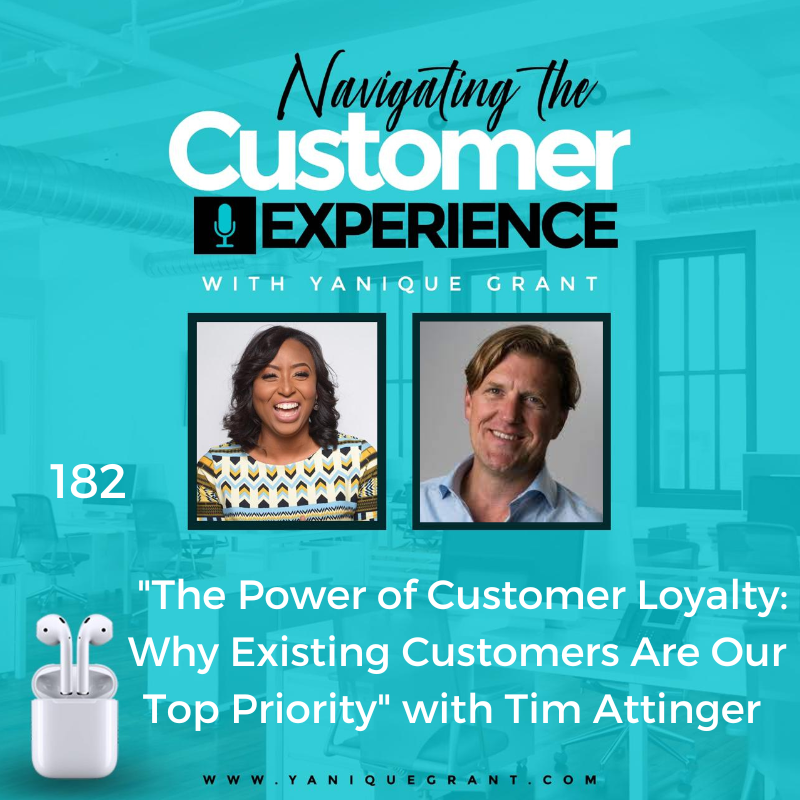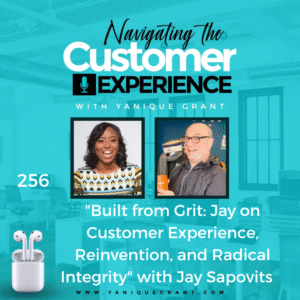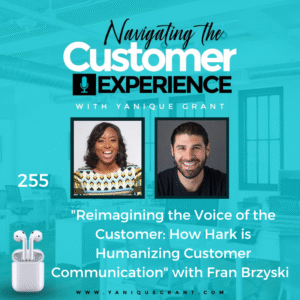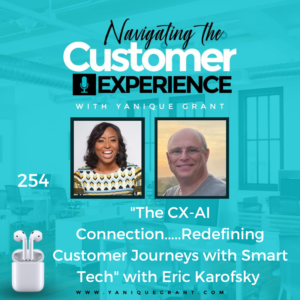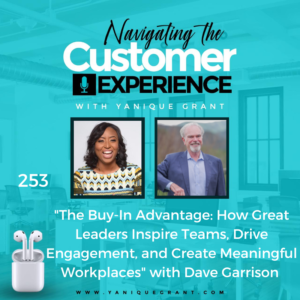Tim Attinger is Co-founder and President of OvationCXM, with nearly 30 years of executive management experience in financial services, financial technology and digital transformation. Prior to Co-founding OvationCXM, Tim held executive roles in digital transformation and growth with successful exits at Monitise, a global mobile money platform acquired by Fiserv and Blackhawk Network, which went public in 2013.
Before this, Tim had an extensive career with Visa. He managed a $1 Billion plus global portfolio of digital businesses, led product innovation development, and was part of the executive team that took Visa Inc. public in 2008. Preceding roles including building and managing strategic growth initiatives for First Data (now Fiserv) and managing client engagements for a host of Fortune 100 companies with Windermere, a McKinsey-spinoff boutique strategy consultancy.
Questions
• Could share in your own words, even though we did read your formal bio, in terms of your background, a little bit of your journey, how you got to where you are today, in your own words, and why you do what you do?
• Can you share with us a little bit about why it’s so important that organizations should have customer experience as a priority for their business. What can businesses do to differentiate themselves and set themselves apart?
• There’s a lot of digital or digitization that’s happening across different industries, and because of the digitization, and also artificial intelligence, people are losing their jobs. It is as a result of increase artificial intelligence and they’re increasing efficiency, but they’re also reducing the level of human input that they’re utilizing What are your views on that?
• What are some of the key things that we need to think about in the customer journey?
• Could you share with us what’s the one online resource, tool, website, or app that you absolutely can’t live without in your business?
• Could you also share with us maybe one or two books that have had the biggest impact on you? It could be a book that you read recently, or even one that you read a very long time ago, but it still has left an indelible mark on your life.
• Could you also share with us what’s one thing that’s going on in your life right now that you’re really excited about – either something you’re working on to develop yourself or your people?
• Where can listeners find you online?
• Do you have a quote or saying that during times of adversity or challenge, you will tend to revert to this quote, it kind of helps to keep you on track or get you back on track if for any reason you get derailed? Do you have one of those?
Highlights
Tim’s Journey
When asked about his journey, Tim shared that the funny thing about it is, it wasn’t as though what you just read off was something he sat out to do consciously from the outset. And it was a bit of opportunistic starting in a consultancy, then it basically offered a role with a former client to help drive strategy and then recruited from there by some friends to go to yet another company.
So, he’s spent most of his time in a particular industry and a particular kind of role. But it almost feels as though that was a happenstance rather than sort of a conscious thing that he was driving, which he guess means in retrospect, his career is a fascinating thing for him to see, because it’s been highly varied, and at the same time, not necessarily overtly managed, if that makes sense.
The Importance of Prioritizing Customer Experience and What Businesses Can do to Set Themselves Apart in the Financial Sector Space
Me: Well, thank you so much for sharing. We’re in a very unique environment globally, as it relates to customer experience. And so, I’d like for you to share with us a little bit about why it’s so important that organizations should have customer experience as a priority for their business. I know most of your experience is in the financial sector, so it’d be good to hear from your perspective, especially seeing that that space is a competitive space. What can businesses do to differentiate themselves and set themselves apart?
Tim shared that he thinks part of the challenge that enterprises find themselves in today, in particularly with respect to sort of customer experience, and how that intersects with digital transformation is that a lot of organizations are looking at customer experience as a way to optimize sort of touch points or channels of communication with customers, as opposed to sort of the way that we look at it, which is thinking about holistically the customers journey with an enterprise.
So, the customer’s journey with a business, which is more than just an interaction, but it’s a series of engagements as the customer tries to accomplish something in their lives or in their own business.
And so, he thinks part of the challenge that businesses have seen today is that they’re thinking about touchpoints as opposed to customer journeys, which creates a challenge in how you solve for delivering great customer experience. And he thinks the reason why customer experience is increasingly important is, it’s a fairly simple thing, but it bears repeating with most enterprises, that all of your revenue as an enterprise comes from paying customers.
So, the most important source of growth for your business is your customer base, frankly, the lowest cost position you can possibly have in any marketplace is to have a satisfied customer base that continues to do business with you.
So, he thinks customer experience is increasingly important in the marketplace because recruiting and then retaining and growing a customer relationship is increasingly challenging in competitive spaces. And those organizations that focus on doing it right, and particularly in orchestrating great customer journeys, which we can talk about in a little more detail. But sort of orchestrating great customer journeys will have a competitive advantage relative to organizations that are looking at the sort of either optimizing touchpoints or trying to re architect their entire sort of back-end business from a technology standpoint, as opposed to focusing from the customer back into their business.
Digitization and Artificial Intelligence – Reducing the Level of Human Input
Me: Brilliant. So, you spoke about customer journey which I do want to talk about. But before we get onto the customer journey, what I wanted to find out also, especially seeing that this space is competitive. And there’s a lot of digital or digitization that’s happening across different industries, especially in the financial sector, for sure. And so, as a result of the digitization, and also artificial intelligence, people are losing their jobs. I’m here in Kingston, Jamaica, and over the weekend, I read an article in our local newspaper, stating that 100 persons in the BPO sector are going to be laid off. And I imagine that it is as a result of increased artificial intelligence and they’re increasing efficiency, but they’re also reducing the level of human input that they’re utilizing What are your views on that?
Tim shared that it’s unfortunate to hear that news, because the best kind of deployment for artificial intelligence, for machine learning, for automation, is not as a replacement for people, but as a compliment to them.
So, a large part of sort of the platform capabilities and again, just taking from context in sort of his company, OvationCXM, and how they think about it, but a large part of the deployment capability that they put in place is, is essentially helping people be better at the live interaction, and the live engagement and the direct engagement with a customer.
And he thinks about the sort of the analogy of the airline industry, when you think about sort of the check in process, if you’ve got a fairly straightforward, I just need my boarding pass, I don’t have any bags to check, and I’m on my way to the gate, right. That’s, something that absolutely, because it’s always the same, it’s never complicated. Automating that stuff is great, because what it does is it frees up the humans who are there to deal with the family of 5 who just had their flight cancelled, they’ve got a connection, the luggage is already on the way.
So, when you look at sort of AI and digitization, a lot of the initial investment has been in exactly what you’re describing sort of these point solutions where I’m just going to try to automate conversations, and digitize a particular channel, but still I’m not looking at what is the overall customer experience of trying to navigate my entire enterprise? And who are the people, the people who are going to help me do that, the Sherpas who helped him sort of climb this hill that is getting himself live with a product or opening a business and having a financial institution helped him do that.
So, he thinks over the long term, the pendulum will swing back to equilibrium and organizations will realize that conversational automation is great for certain things. But having intelligence inside of systems to help deliver the right answers to the right people in the right moment in the context of what the customer is trying to accomplish and then having humans engaged with that customer is really he thinks where the industry is going to go.
Key Points to Think About in the Customer Journey
Me: So, let’s go back to the customer journey. So, the journey of the customer, for our listeners that I mean, I’ve had episodes in the past where we have guests that talk about customer journey. But because I want to get a little bit more granular, let’s talk about the customer journey, let’s say for example, in a financial institution, if you are, let’s say, getting a product, like a credit card, for example, when you look at the journey that the customer will take from application until however long they use that card for, what are some of the key things that we need to think about in the journey? And is a journey just giving the customer the card? Because now we have new business, now we have a new loan that we’ve booked, or is it more so the maintenance of having that person on board.
Like in Jamaica, for example, one of my greatest pet peeves is, if you pay really well on your credit card, you automatically get an increase annually. I think a telephone call should be given to the customer to find out, “We see that you’re a great customer in terms of payments, and we’d like to offer you an additional increase, is this something you’d be open to?” Versus just getting your statement and seeing that you’ve been given an additional X thousands of dollars on the card.
But what are your views on that?
Tim shared that to back it up into sort of where his firm spends most of their time, which is in sort of business relationships. So, banks to take the analogy Yanique just had, imagine a bank helping a business owner who’s opening a new business apply for a line of credit so that they can fund equipment and site improvements and setting up a payroll service so that they can sort of disperse funds to employees. And if you think about sort of journeys in 3 basic increments, they’re sort of the discovery and buying journey, where he sort of figure out what it is he need, and who has it, and from whom he’d like to buy it.
And then once you finally committed to buying it from someone, what is one of the most challenging things they’ve seen in financial services is getting a customer from, “Hey, I’d like this solution from you, Mr. Bank, all the way through to it’s working for me today and I’m finally live with it.” And in business banking, that process can be fairly complicated with multiple steps. Imagine what it’s like as a small business owner applying for a lending relationship, you’ve got paperwork you fill out, there are forms you have to send in, there are credit checks that the bank does, there’s an entire internal process of reviewing your risk and underwriting requirements that you don’t even have any visibility into. And then somewhere out the other end of it, you find out whether or not you qualify.
And then on the tail end of the sort of what they call the Go Live journey, there’s also the ongoing relationship, which is quite frankly, where most of the experience of a financial institution comes from, which is what’s it like every single day for me to use this and solve problems? And what are some of the most important things in sort of thinking about, let’s just take that Go Live journey as an example, most businesses are blind to what’s happening.
I bought something from you and then it kind of disappears into a black hole, I don’t hear from you for 3 or 4 weeks, except every couple of maybe twice you asked me for things completely out of the blue, I have no idea why and then. And then another couple of weeks go by and I get some kind of decision. It’s sort of like one of the most opaque things that you can possibly imagine, as opposed to you think about the experience of that business owner, as a consumer when they take advantage of something like a food delivery product, or, God forbid, they just buy something from an online merchant, like an Amazon.
There are really clear steps that are communicated to you, here’s where you are, here’s where you’re going, here’s how many steps there are from here to there and step 4, we’re going to ask you for something. It’s as simple as saying, make it really clear to the customer, what are sort of the stops along the way on the journey that you’re about to undertake with them, make them aware of where they are. And even internally in organizations that are trying to deliver to that customer, you quite often have departments that don’t talk to each other. So, everybody internally is kind of like, who’s got the ball? Who’s got next? What am I supposed to be doing now? When does this get done?
And so, he thinks a large part of making experiences go well, it’s just connecting all of those humans and systems and teams into a fabric that makes everybody aware of what everyone else is doing. Where are we in this process and communicating that in simple terms to the customer, so they know where they are.
When you think about it a large part of customer experience is just visibility. And, frankly, one of the best ways to disappoint someone is to not meet the expectations that they have. And so, a big part of having a journey go well is just setting expectation upfront, here are the 5 steps that we’re going to go through, here’s how long it’s going to take, here’s what we’ll need where and when. And here’s who you can talk to on this stage, right?
Me: Agreed, agreed, managing expectations and communication is so important.
Tim stated and invisibility, just simply where am I? Who’s got this now? And what do they need so that I can make sure it’s moving forward, because at the end of the day, the customer is just trying to accomplish something and the journey through your enterprise is just a means to an end, think about that small business owner, I’m just trying to open a business and start selling pizzas. I really don’t want to be an expert in underwriting. I just want to know when it is that that process is done, what do you need from me to make it go as quickly as possible?
Me: Indeed. Because at the end of the day, they also have their customers that they’re trying to get to serve, but they can’t do that if you don’t do your part.
Tim agreed that’s exactly right. And so, one of the interesting things, you sort of brought up credit cards, one of the most important things that a financial institution can do for a small business owner, is give them a way to accept payment, right?
That sort of what they call accounts receivable, right, which is essentially managing your revenue from your own customers and making that something that’s easy to do, that works every time that gets that money from your customers into your bank account on a regular basis. You can make payroll, you can buy supplies, all of that.
The role that banks play in helping small businesses survive and thrive, really is it’s critical in those kinds of activities. So, if something goes bump in the night, or there’s a hiccup in that process, being on top of it, and giving the customer an expectation when it’s going to get solved is super important, particularly for businesses that basically need that cash flow to operate.
App, Website or Tool that Tim Absolutely Can’t Live Without in His Business
When asked about an online resource that he cannot live without in his business, Tim shared that what’s super, super, super critical for them, they use their platform and then a combination of that, and then an online tool set called Miro, which is almost like it’s a group whiteboard capability. They use that with their bank clients in the way that you do these things today, because everybody’s all over the place, you get on an hour, or two Zoom call and they actually facilitate discussions with their clients on what exactly is it like from a customer’s point of view to try to accomplish something inside of your bank.
What is it like from a customer’s standpoint, and particularly, not just your bank, but also increasingly, I know, you’ve seen this, financial institutions are partnering with other companies and external providers and financial technology providers to deliver solutions to businesses. So, increasingly, it’s not just, how are you doing things internally, but also, what does it like for the customer to get bounced between you and some other company they’ve never heard of that you happen to be sourcing a solution from.
So, that capability and the ability to map all of that out in real time with their clients and then so that they can see what that looks like today and then start working to make it better, has become a critical component of sort of how they help those banks improve their business.
Books that Have Had the Biggest Impact on Tim
When asked about books that have had an impact, Tim stated that absolutely that’s an easy one. In the interest of full disclosure, again, back to he didn’t consciously set out in this path to be in financial services. He was originally studying to be a Literature Professor.
Me: You like to read.
Tim stated that he decided he liked it so much, he didn’t want to have to do it for a living. So, after he finished his master’s degree, as he was thinking about maybe do I or do I not want to go get a doctorate and become a professor. On a lark, moved out to the Bay Area in San Francisco and just backed into a job at a management consulting firm. And the founding partner of that firm encouraged him to read a book by a couple of his McKinsey colleagues called In Search of Excellence: Lessons from America’s Best-Run Companies by Thomas J. Peters.
And because he had almost no business education whatsoever, he eagerly dove into it. And the interesting thing about that book is that it’s a fairly straightforward analysis of how have companies across a number of different industries been successful. And almost all of the stories come back to a fairly simple premise, that if you build your business from the marketplace back, you start with the customer, you start with a customer group, or a portfolio or a type of customer you want to serve, and then you design everything else about your business around being really great at meeting that need for that customer.
You think about sort of what the typical airline experience was before Southwest came on the scene, or what the typical shopping experience looked like before somebody like an Amazon came on the scene. It’s like I’m going to rethink what it is a customer is trying to accomplish, what needs they’re trying to fill, and then focus really intently on doing that very well, and strip away everything else that doesn’t absolutely serve that need. And so, that was a real revelation for him, sort of as a newbie in the business world.
And that’s continued to be a touchstone for every career stop he’s had and particularly in the role that he has now, which is basically helping a host of different enterprise companies of various stripes, mainly in financial services now, but also in a number of other industries, get to that realization, focus intently on what is the experience of the customer in trying to accomplish something in their lives and how does he design what he’s doing around meeting that really well. So, it’s kind of come full circle for him from that sort first introduction to how good businesses operate.
What Tim is Really Excited About Now!
When asked about something exciting that’s going on right now, Tim shared what’s really exciting for him, sort of as he’s gone through his career, he’s made a study of how businesses create ecosystems, sort of how networks of organizations come together around a common delivery to a customer or to a segment or to create a product, or solution and you think about the companies he’s worked in Visa, Blackhawk, sort of which are network business models where you’ve got sort of, you build a platform, and then you have companies onto that platform and do business with each other through the capability you’re delivering.
And they’re finding in the business today, OvationCXM, which is their audio sort of customer experience management software platform, that they’re starting to see the same kind of ecosystem dynamics that they have in sort of major enterprise banks and insurance companies and healthcare organizations. Partnered with a host of providers of services and solutions, whether that’s financial technology, health tech, what have you and their customer experience management platform is becoming a way for them to collaborate and interact as an ecosystem in delivering great experiences to their customers.
And it’s fascinating to see that sort of network effect begin to take off. Even something as simple as their customer experience management delivery platform in this industry, it’s just fascinating to see network effects start to materialize in the software business, which is it’s really exciting for him because he’s spent a lot of his days helping to manage and grow network effect businesses, and they’re starting to see that in theirs today. So, it’s super exciting, at least for him, maybe geeky for most folks, but for him, it’s fun to watch.
Me: Okay, it’s like you’re forming your own community.
Tim agreed yes, exactly. And that’s the funny thing about it is that in the same way that communities are super important to our lives as individuals, right, and families, businesses are actually not that different, the immunities of companies that are delivering capabilities or delivering on something tend to be stronger, more resilient. And, frankly, more adaptive.
Where Can We Find Tim Online
Website – www.ovationcxm.com
Quote or Saying that During Times of Adversity Tim Uses
When asked about a quote or saying that he tends to revert to, Tim shared that he does and it’s from a longer poem by Rudyard Kipling and the entirety of which he doesn’t remember off the top of his head, but one line in particular, which is about sort of one of the most important things you can do in times of duress is “Be the person who’s keeping his head while everyone else around you is losing theirs.” And he thinks that has helped in a number of ways, in particular stressful situations, it is just to step outside of the challenge that you’re currently in and realize that the only way to respond to and solve the challenges is to not let it cloud your mind. And he thinks that that quote has helped immensely in difficult times professionally.
IF ~ BY RUDYARD KIPLING
(‘Brother Square-Toes’—Rewards and Fairies)
If you can keep your head when all about you
Are losing theirs and blaming it on you,
If you can trust yourself when all men doubt you,
But make allowance for their doubting too;
If you can wait and not be tired by waiting,
Or being lied about, don’t deal in lies,
Or being hated, don’t give way to hating,
And yet don’t look too good, nor talk too wise:
If you can dream—and not make dreams your master;
If you can think—and not make thoughts your aim;
If you can meet with Triumph and Disaster
And treat those two impostors just the same;
If you can bear to hear the truth you’ve spoken
Twisted by knaves to make a trap for fools,
Or watch the things you gave your life to, broken,
And stoop and build ’em up with worn-out tools:
If you can make one heap of all your winnings
And risk it on one turn of pitch-and-toss,
And lose, and start again at your beginnings
And never breathe a word about your loss;
If you can force your heart and nerve and sinew
To serve your turn long after they are gone,
And so hold on when there is nothing in you
Except the Will which says to them: ‘Hold on!’
If you can talk with crowds and keep your virtue,
Or walk with Kings—nor lose the common touch,
If neither foes nor loving friends can hurt you,
If all men count with you, but none too much;
If you can fill the unforgiving minute
With sixty seconds’ worth of distance run,
Yours is the Earth and everything that’s in it,
And—which is more—you’ll be a Man, my son!
Please connect with us on Twitter @navigatingcx and also join our Private Facebook Community – Navigating the Customer Experience and listen to our FB Lives weekly with a new guest
Links
· In Search of Excellence: Lessons from America’s Best-Run Companies by Thomas J. Peters
Grab the Freebie on Our Website – TOP 10 Online Business Resources for Small Business Owners
The ABC’s of a Fantastic Customer Experience
Do you want to pivot your online customer experience and build loyalty – get a copy of “The ABC’s of a Fantastic Customer Experience.”
The ABC’s of a Fantastic Customer Experience provides 26 easy to follow steps and techniques that helps your business to achieve success and build brand loyalty.
This Guide to Limitless, Happy and Loyal Customers will help you to strengthen your service delivery, enhance your knowledge and appreciation of the customer experience and provide tips and practical strategies that you can start implementing immediately!
This book will develop your customer service skills and sharpen your attention to detail when serving others.
Master your customer experience and develop those knock your socks off techniques that will lead to lifetime customers. Your customers will only want to work with your business and it will be your brand differentiator. It will lead to recruiters to seek you out by providing practical examples on how to deliver a winning customer service experience!

